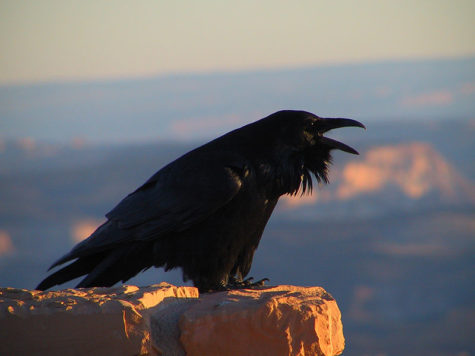 Well, folks, we’ve just completed Corvid Redux Week, and you know what that means. Or maybe you don’t. It means we had a whole week of posts about the antics of some noisy and spooky looking but truly amazing birds. Our offerings went like this:
Well, folks, we’ve just completed Corvid Redux Week, and you know what that means. Or maybe you don’t. It means we had a whole week of posts about the antics of some noisy and spooky looking but truly amazing birds. Our offerings went like this:
Sarah celebrated “scatter hoarding,” a wonderful seed-saving thing that smaller corvids (particularly jays and nutcrackers–did you know they were corvids?) do that is good for the ecosystem. They loan their wings to trees, Sarah tells us. Her lovely drawings accompany her text, so go back and enjoy.
Then Ann wrote that even though “they look like flying shreds of a medieval hell,” crows are actually pretty awesome, especially on the social front. (She doesn’t use the word “awesome.” She uses better words.) She backs up her opinion with both prose and verse.
Jessa impresses with many fabulous facts about ravens, cousins of crows. You should know she gathered this information well before we’d ever heard of the Three-Eyed Raven and long before Jon Snow trusted a Raven to fly speedily across many Kingdoms of mountains and oceans in crappy weather to tell Daenerys to hurry up already with the fire-breathing dragons. So, really, Jessa was ahead of us all on the Raven thing.
Michelle, then, convinces us, by way of real scientific experiments that included people wearing creepy masks, that crows have super memories for human faces—probably an adaptation to our taking over their world—and will hold a grudge against you and your stupid face if you wrong them.
Finally, Rose. Rose, whose first word as an baby was “bird,” hates birds. Corvids are birds, and she hates them most of all. They’re “conniving, ruthless, manipulative, and terrifying.” I think she’s kind of impressed by them, but that’s just my read.
Happy Weekend to All!
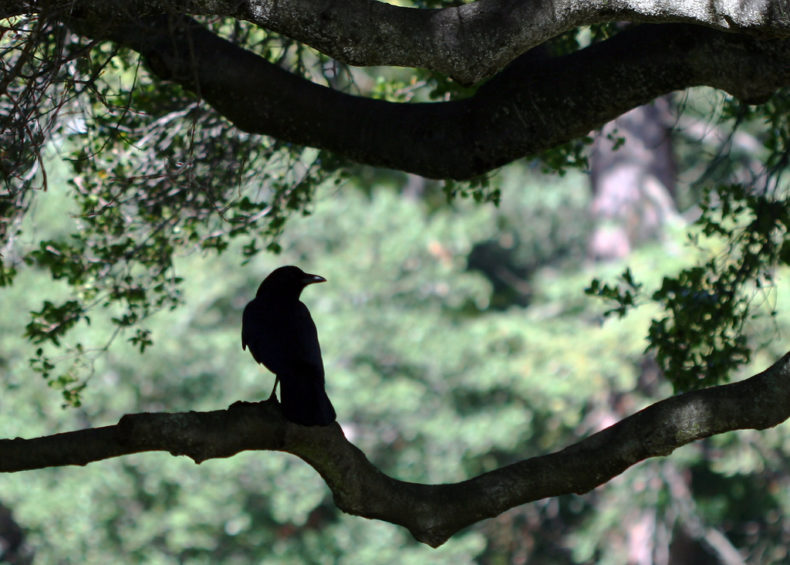
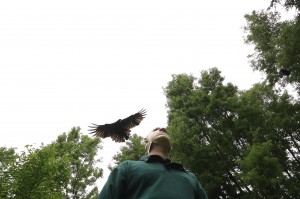
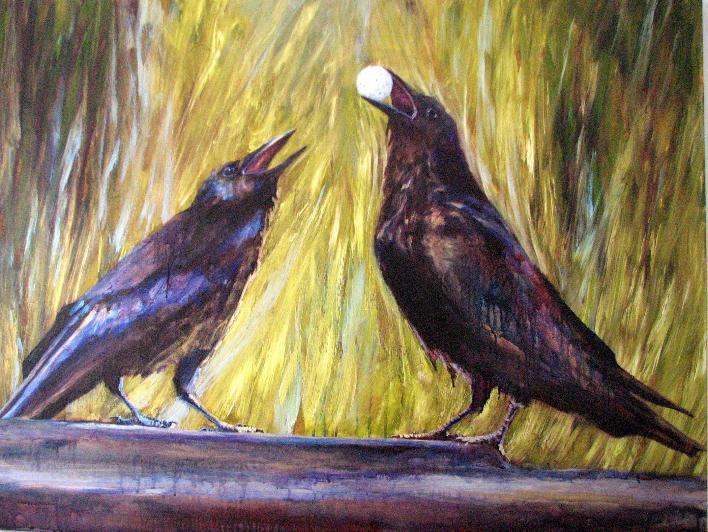 Ann, I see your
Ann, I see your 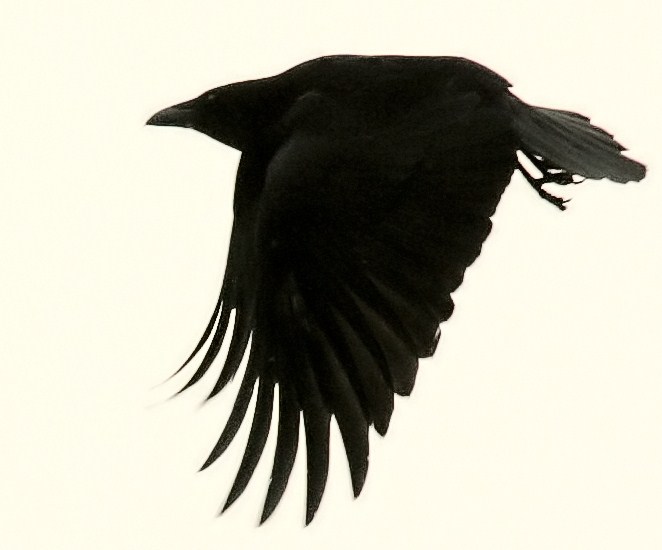 “Light thickens, and the crow makes wing to the rooky wood.” MacBeth is talking, telling his wife it’s a good night to murder the king. Even a century earlier, the collective noun was “a murder of crows.” Three centuries later, a poet watches a horse that’s been shot: “gorged crows rise ragged in the wind. The day/ After death I had gone for farewell, and the eyes/ Were already gone – that/ the beneficent work of crows.” A year ago I watched a crow kill and eat a nestling robin. Nobody likes crows. I think it’s because they’re so black – black feathers, black legs, black bills, black eyes. They look like flying shreds of a medieval hell.
“Light thickens, and the crow makes wing to the rooky wood.” MacBeth is talking, telling his wife it’s a good night to murder the king. Even a century earlier, the collective noun was “a murder of crows.” Three centuries later, a poet watches a horse that’s been shot: “gorged crows rise ragged in the wind. The day/ After death I had gone for farewell, and the eyes/ Were already gone – that/ the beneficent work of crows.” A year ago I watched a crow kill and eat a nestling robin. Nobody likes crows. I think it’s because they’re so black – black feathers, black legs, black bills, black eyes. They look like flying shreds of a medieval hell. 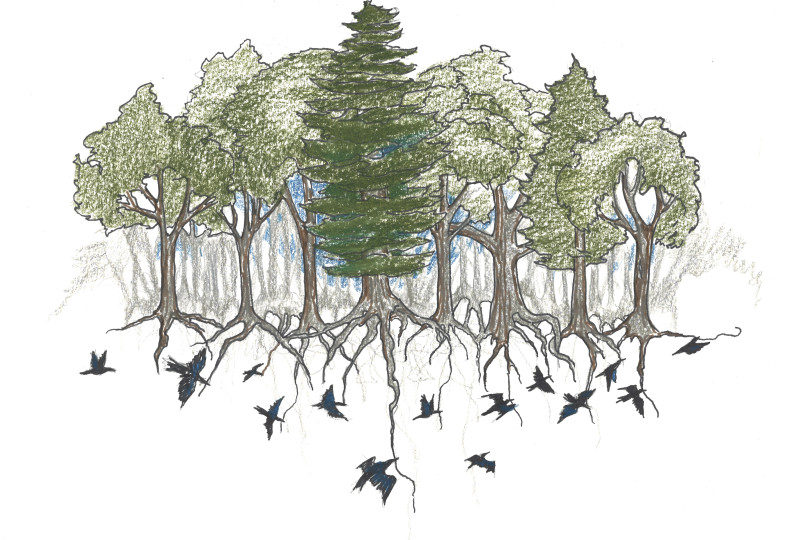
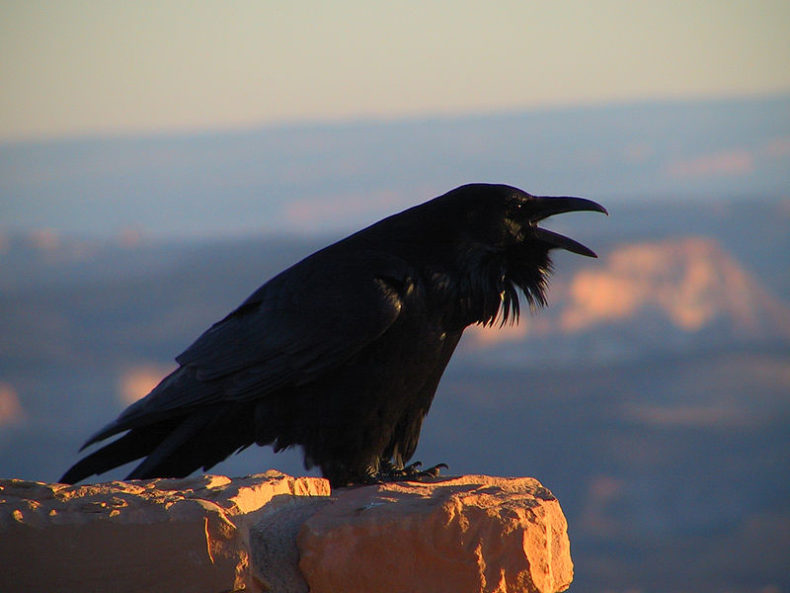
 Christie kicked off the week by reduxing a post about the time she
Christie kicked off the week by reduxing a post about the time she